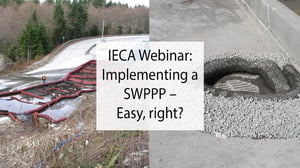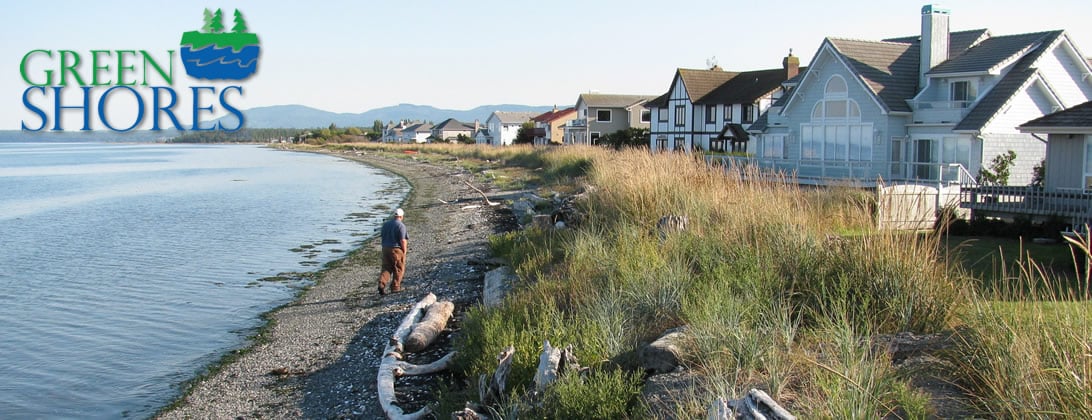The International Erosion Control Association is offering a webinar on Implementing a Stormwater Pollution Prevention Plan (SWPPP). It'll be on June 20 and 21 from 10am to 11am PST each day. For just $90 (member) or $120 (non-member), beginners to intermediate construction professionals will learn about implementation, modifications, documentation and compliance of a SWPPP.

From IECA, the webinar is 2 Professional Development hours and will cover:
This webinar will focus on 2 key aspects of SWPPP implementation:
- SWPPP modifications
- Documentation of implementation tasks to show compliance
The design is complete, the permits have been obtained, and contracts are in place for contractors. It’s time to get construction started! What could possibly go wrong?
A SWPPP, stormwater pollution prevention plan, is a best guess about how the construction site will begin, progress and finish based upon the information that the design has before construction. However, it is rare that construction progresses as the designer envisioned. When implementing a SWPPP, expect to encounter the following:
- The contractor will have a different – and possibly better – way of grading the site, along with a different construction sequence.
- The unforeseen will be uncovered and it will impact the construction schedule.
- Not all parties on the construction site will agree on E&SC or stormwater management for the site. When implementing the SWPPP, the inspector/site manager must adapt to these issues while still meeting the intent of all permits.
SWPPP modifications. There is no perfect SWPPP. All SWPPPs will need revision and modification during construction. Some states do not require that plans be resubmitted when modifications are required. Other states do require plan submittal and approval. Know your state’s requirements – and any professional requirements. In most states, professional engineers are the only people licensed to design pipes and embankments (think sediment basins and culverts). The SWPPP must reflect what’s on the ground and vice versa. For example, when silt fence or check dams are removed when they are no longer needed, the SWPPP should be modified to show that these measures have been removed. Inspection documentation should also indicate that the measures have been removed and why they were removed. Together, the modified SWPPP and inspection documentation should clearly tell the story of the site conditions at the time of the inspections. Take photos of the site as well to confirm site conditions.
Documentation. As the SWPPP is revised or modified, document the changes on the SWPPP sheets, in inspection reports and with photos. Documentation is critical to show compliance. The construction general permit allows time for a contractor/developer to respond to problems found on a construction site, and if the problems are resolved within that timeframe, the site is in compliance. Note that some states have additional regulations governing construction sites and off-site sedimentation can be considered a violation of the regulation, regardless of storm size.
Besides SWPPP modification and inspection reports, a site manager/inspector must also keep good documentation of rain events. The Construction General Permit requires that measures be designed for the 2yr, 24hr rain event. To determine the return interval for each storm, document the time a storm started and ended and the depth of rain. That information can be compared to rainfall information provided on NOAA’s Atlas 14 Point Precipitation Frequency Estimates website (https://hdsc.nws.noaa.gov/hdsc/pfds/pfds_map_cont.html) to determine the storm’s return interval. Site managers/inspectors should use the rainfall data to make decisions about the failed measures. If measures failed in a storm that exceeded the 2 year storm equivalent intensity, the measures were adequate and should be reinstalled. If measures failed in a storm that was less than or equal to the 2 year storm event, the measures should be upgraded. can be compared to the rain fall information on NOAA’s Atlas 13 site to determine the equivalent intensity storm.
As a final good practice on a construction site, provide feedback to the designer about the site: what worked well, what didn’t work well. If that information is not conveyed to the designer, the same issues may occur on other construction sites.
Learning Objectives:
- Understand when to modify a SWPPP, formally or informally
- Document construction site activities to show compliance
- Use rainfall data to determine a SWPPP’s effectiveness
Register on the IECA website today!
.jpg)
Presented by Beth McLaughlin, Consultant/Owner, McLaughlin Consulting
Beth has more than 30 years of experience in stormwater management, including construction site inspections and SWPPP implementation. Her additional experience includes MS4 program policy and compliance strategy development, training, and permit negotiation. She has worked for state and county governments and provides consulting to municipalities and private agencies throughout the southeast.



